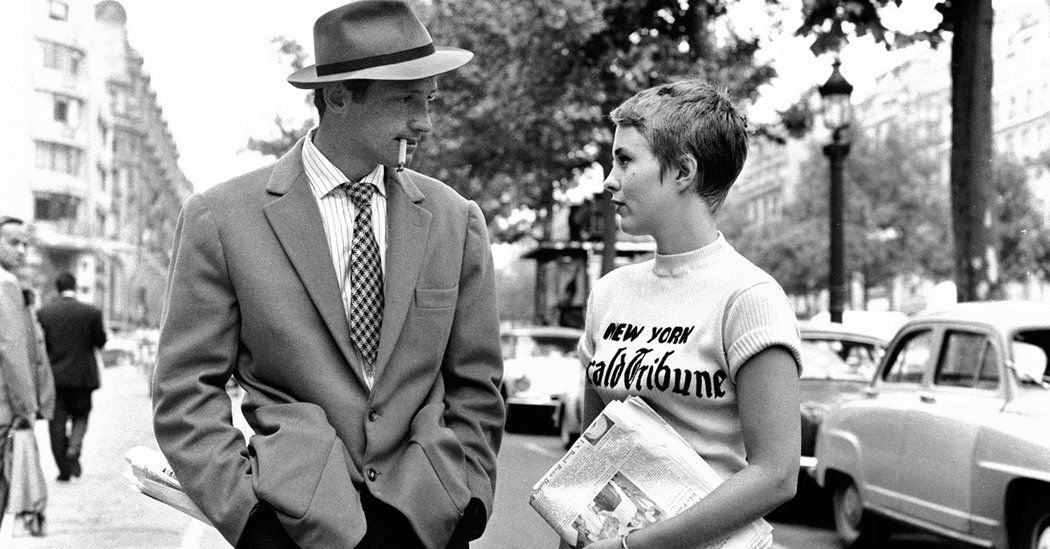
To three generations of fans, Jean Seberg is a haircut: the side-swept pixie she wore in “Breathless,” the French cinema classic from 1960 that made her an international star.
She would have chafed to hear that.
No blank-faced mannequin with a gamin crop, Seberg, who died at 40 in 1979, made more than 30 movies during her brief career. She left her native Iowa for Hollywood while still in her teens but eventually settled in Paris, becoming a darling of the French New Wave.
She corresponded with André Malraux, wore Yves Saint Laurent and played poker with Françoise Sagan, as Rex Reed wrote in a 1969 profile. She was married to the Russian-French novelist Romain Gary, with whom she had a son.
A lifelong champion of social justice, she persisted through the late 1960s in supporting civil rights causes, even after becoming a target of F.B.I. surveillance for her vocal and financial support of the Black Power movement.
Her rash courage is simultaneously celebrated and eulogized in “Seberg,” a film from Amazon Studios set to open in theaters on Dec. 13, with Kristen Stewart in the title role.
So it seems perverse, and maybe misguided, that contemporary filmgoers are more likely to focus on the heroine’s breakaway style, an amalgam of worldliness and waifish nonchalance that has embedded itself in the consciousness of successive generations.
Gender indifferent and trim — a pared-down, unforced alternative to the oversize, often ungainly clothes on the runways of late — that look has developed a life of its own, one as relevant now as it was at the zenith of Seberg’s career.
“She epitomizes modernity,” said Jane Hess, a former fashion writer also known as Medora on her influential Instagram account. “It all boils down to the fresh beautiful face without makeup, the blond haircut, the white T-shirt, the jeans and the sunglasses.”
Film stills and behind-the-scene photographs show a playfully androgynous Seberg wearing chunky Aran sweaters, cardigans or Breton-striped T-shirts with cigarette pants and flat shoes. She wore her hair like a young boy, “as if she might have cut it herself and simply run her fingers through it,” Ms. Hess said.
Among Seberg’s most identifiable turnouts: the oversize men’s button-downs and shorts she wears in “Bonjour Tristesse” and The Herald Tribune logo tee she wore as Jean-Paul Belmondo’s sidekick in “Breathless.”
Rodarte, the Los Angeles fashion house, revived the look a decade ago, issuing copies of the tee in time for the movie’s 50th anniversary. And @JeanSeberg even has her own Instagram hashtag, with nearly 22,000 posts that show her variously garbed in men’s shirts and fedoras, shirtwaists, djellabas and jeans.
Her raffish Midwestern look contrasted bracingly with the restrictively tailored, often corseted look of her time. “Her attitude was youth personified, not overtly sexual and supercasual,” Ms. Hess said. “Put her on any street this minute, and she would look contemporary.”
Still, dressing the character presented challenges. Onscreen or off, Seberg was an arresting mash-up of contradictions. “She was overflowing with humanity, brave enough to speak out for justice and stand up for change, yet vulnerable,” said Michael Wilkinson, the film’s costume designer. “She was public and private, liberated but also very needy.”
Seberg’s variability goes some way toward explaining her lasting allure. “We live in a fluid time,” Mr. Wilkinson said. “The idea that we don’t have to define ourselves by one trait or style — that’s appealing now.”
He became enamored of his subject, poring over any number of archival images to recreate or, when necessary, reimagine her look. Whether her style sense was inborn or imposed by her directors, “the strength of her character was innate,” he said.
Because photographs of Seberg in her 30s were scarce, Mr. Wilkinson had to extrapolate from popular images of the ’60s and ’70s to devise a wardrobe inspired by the leading designers of the day. “She would have worn Yves Saint Laurent, Courrèges, Givenchy and Ungaro,” he said.
He did incorporate a few contemporary designer pieces, including a ’60s-inspired Chanel suit and the Roger Vivier buckle-front pumps, known at the time as pilgrim shoes, which Ms. Stewart wears throughout the film. He used fabrics and trims from vintage collectors and sourced some costumes from East and West Coast rental houses.
There were references as well to signature Seberg looks, including the striped Breton shirt Ms. Stewart wears to a barbecue, and the oversize men’s shirt she has on as she prepares for a photo shoot. To underline the character’s more fragile side, Mr. Wilkinson draped Ms. Stewart in a filmy silk dressing gown.
In contrast, the image Seberg presented to the public in her 30s was sculptural and strong, he said. Psychically battered and vulnerable, “she wore fashion like an armor to face the world.”







